There was a certain level of excitement on the ship today as over the coming hours we would make our way through one of the most important shipping corridors in the world – the Suez Canal.
The canal was formally opened in November 1869, with the first ship to pass through being the Aigle (followed by a long procession of other ships)
. It became a commercial success and earned the company that built it (the Canal Company) a lot of money.
Due to its importance, the canal was defended through both World Wars, however due to feuding over the Canal Company, Britain, France and Israel attacked Egypt which led to the Suez crisis in 1956. The crisis was fixed when the USA negotiated, with the help of the UN, the withdrawal of the various countries.
The Canal was also closed during the Arab-Israeli wars of 1967 and 1973. The channel was blocked by mines, trapped ships and artillery fire. Once again the USA came to the rescue and helped to get a truce and clear the mines. This led to the canal being reopened and the resumption of trade.
Ship traffic through the canal transits in convoys (we were ship number two, with 29 in our convoy). Each day there is one northbound convoy and two southbound convoys. There are two areas where the north and southbound convoys meet – the Great Bitter Lake and Lake Timsah
. Around 17,225 vessels transit the canal each year, with each paying around $250,000 for the privilege.
When we got to Great Bitter Lake, the first Southbound convoy had already arrived and were anchored waiting for us to pass, while the second southbound convoy waits further north in the canal at Lake Timsah. We passed both convoys without incident and continued our way north. On a side note there was a small fishing vessel that decided to try its luck in the middle the canal, needless to say it got a taste of our ships horn and decided it needed to move out of the way.
Around Lake Timsah and the city of Ismailia, we sailed past the Jabal Mary Am War Memorial. The memorial is for people who died defending the canal in World War 1. Just outside the city there is a war grave site that is maintained by the various countries represented (Australia, New Zealand, Britain). The memorial is deceptive as from one angle it looks to be a single obelisk, however as you go past it becomes two obelisks with a statue
.
Slightly further along the canal there is another memorial. The Suez War Memorial remembers lives lost during the Suez War and is shaped like a bayonet.
Other than waving at the various military personnel that line the eastern banks of the canal, there were two more highlights – this time in bridge form.
The El Ferdan Railway Bridge is the longest swing span bridge in the world. Sometimes there is a train waiting to use the bridge, which when ships are transiting is parked over the bank instead of over the canal. This time there was no train waiting.
Our last bridge was the Suez Bridge. It is a long suspension bridge that joints to parts of Egypt together. Unlike some Sydney Harbour Bridge where the ship had only a couple meters of clearance, with the Suez Bridge we had a good 20 meters.
Towards the end of the transit we passed several canals that ran straight to the Nile. These canals keep the surrounding areas agriculturally viable.
At around 3pm and with the rest of the convoy following, we cleared the canal and entered the waters of the Mediterranean.
It had been a fun filled day that included ships, fishing vessels, bridges, military personnel, military installations, desert and cities.
Fun fact:
The image of Nike (the god not the sporting apparel brand) appears on Olympic medals. His image represents victory.
Northbound convoy
Thursday, June 19, 2014
 Suez, Red Sea and Sinai, Egypt
Suez, Red Sea and Sinai, Egypt
Other Entries
-
16Phi Phi
Jun 0217 days prior Phuket, Thailandphoto_camera6videocam 0comment 0
Phuket, Thailandphoto_camera6videocam 0comment 0 -
17Practising for pirates
Jun 0316 days prior At Sea, Internationalphoto_camera0videocam 0comment 2
At Sea, Internationalphoto_camera0videocam 0comment 2 -
18Windy
Jun 0415 days prior At Sea, Indiaphoto_camera1videocam 0comment 0
At Sea, Indiaphoto_camera1videocam 0comment 0 -
19Rolling through Colombo
Jun 0514 days prior Colombo, Sri Lankaphoto_camera8videocam 0comment 1
Colombo, Sri Lankaphoto_camera8videocam 0comment 1 -
20Rounding the bottom of India
Jun 0613 days prior At Sea, Indiaphoto_camera1videocam 0comment 0
At Sea, Indiaphoto_camera1videocam 0comment 0 -
21La la la
Jun 0712 days prior At Sea, Indiaphoto_camera3videocam 0comment 2
At Sea, Indiaphoto_camera3videocam 0comment 2 -
22Motoring around Mumbai
Jun 0811 days prior Mumbai, Indiaphoto_camera12videocam 0comment 2
Mumbai, Indiaphoto_camera12videocam 0comment 2 -
23“I swear I’m feeling fine”
Jun 0910 days prior At Sea, Internationalphoto_camera0videocam 0comment 1
At Sea, Internationalphoto_camera0videocam 0comment 1 -
24The fallout
Jun 109 days prior At Sea, Omanphoto_camera3videocam 0comment 0
At Sea, Omanphoto_camera3videocam 0comment 0 -
25Salam Dubai - Part 1
Jun 118 days prior Dubai, United Arab Emiratesphoto_camera13videocam 0comment 1
Dubai, United Arab Emiratesphoto_camera13videocam 0comment 1 -
26Salam Dubai - Part 2
Jun 127 days prior Dubai, United Arab Emiratesphoto_camera8videocam 0comment 0
Dubai, United Arab Emiratesphoto_camera8videocam 0comment 0 -
27Success
Jun 136 days prior At Sea, Omanphoto_camera0videocam 0comment 0
At Sea, Omanphoto_camera0videocam 0comment 0 -
28Rough seas
Jun 145 days prior At Sea, Omanphoto_camera2videocam 0comment 1
At Sea, Omanphoto_camera2videocam 0comment 1 -
29Pirate lookout
Jun 154 days prior Gulf Of Aden, Somaliaphoto_camera2videocam 0comment 1
Gulf Of Aden, Somaliaphoto_camera2videocam 0comment 1 -
30Ships everywhere
Jun 163 days prior At Sea, Eritreaphoto_camera3videocam 0comment 1
At Sea, Eritreaphoto_camera3videocam 0comment 1 -
31Roaming the Red Sea
Jun 172 days prior At Sea, Saudi Arabiaphoto_camera0videocam 0comment 0
At Sea, Saudi Arabiaphoto_camera0videocam 0comment 0 -
32Gulf of Suez and sporting events
Jun 181 day prior At Sea, Egyptphoto_camera4videocam 0comment 0
At Sea, Egyptphoto_camera4videocam 0comment 0 -
33Northbound convoy
Jun 19 Suez, Egyptphoto_camera12videocam 0comment 0
Suez, Egyptphoto_camera12videocam 0comment 0 -
34Mediterranean melodies
Jun 201 day later At Sea, Egyptphoto_camera1videocam 0comment 0
At Sea, Egyptphoto_camera1videocam 0comment 0 -
35Welcome to the Cyclades
Jun 212 days later Mykonos, Greecephoto_camera11videocam 0comment 1
Mykonos, Greecephoto_camera11videocam 0comment 1 -
36Athena vs Poseidon
Jun 223 days later Athens, Greecephoto_camera17videocam 0comment 1
Athens, Greecephoto_camera17videocam 0comment 1 -
37Everyone’s at Ephesus
Jun 234 days later Ephesus, Turkeyphoto_camera14videocam 0comment 0
Ephesus, Turkeyphoto_camera14videocam 0comment 0 -
38We’ve come to Constantinople
Jun 245 days later Istanbul, Turkeyphoto_camera14videocam 0comment 0
Istanbul, Turkeyphoto_camera14videocam 0comment 0 -
39Memorials
Jun 256 days later Anzac Cove, Turkeyphoto_camera12videocam 0comment 3
Anzac Cove, Turkeyphoto_camera12videocam 0comment 3 -
40Steep Santorini
Jun 267 days later Santorini, Greecephoto_camera13videocam 0comment 2
Santorini, Greecephoto_camera13videocam 0comment 2 -
41Rest day
Jun 278 days later At Sea, Greecephoto_camera0videocam 0comment 0
At Sea, Greecephoto_camera0videocam 0comment 0 -
42Boka Kotorska
Jun 289 days later Kotor, Serbia and Montenegrophoto_camera8videocam 0comment 0
Kotor, Serbia and Montenegrophoto_camera8videocam 0comment 0 -
43Veneto
Jun 2910 days later Venice, Italyphoto_camera16videocam 0comment 1
Venice, Italyphoto_camera16videocam 0comment 1 -
44Good morning Venice
Jun 3011 days later Venice, Italyphoto_camera8videocam 0comment 1
Venice, Italyphoto_camera8videocam 0comment 1 -
45Historical Dubrovnik
Jul 0112 days later Dubrovnik, Croatiaphoto_camera10videocam 0comment 0
Dubrovnik, Croatiaphoto_camera10videocam 0comment 0 -
46Volcano!
Jul 0213 days later At Sea, Italyphoto_camera5videocam 0comment 0
At Sea, Italyphoto_camera5videocam 0comment 0 -
47Running around Roma
Jul 0314 days later Rome, Italyphoto_camera16videocam 0comment 0
Rome, Italyphoto_camera16videocam 0comment 0 -
48Tuscany
Jul 0415 days later Florence, Italyphoto_camera13videocam 0comment 0
Florence, Italyphoto_camera13videocam 0comment 0 -
49Oh la la, French Rivera
Jul 0516 days later Toulon, Francephoto_camera11videocam 0comment 0
Toulon, Francephoto_camera11videocam 0comment 0 -
50Basking in Barcelona
Jul 0617 days later Barcelona, Spain and Canary Islandsphoto_camera15videocam 0comment 0
Barcelona, Spain and Canary Islandsphoto_camera15videocam 0comment 0 -
51Sea day
Jul 0718 days later At Sea, Spain and Canary Islandsphoto_camera2videocam 0comment 1
At Sea, Spain and Canary Islandsphoto_camera2videocam 0comment 1

 Suez, Red Sea and Sinai, Egypt
Suez, Red Sea and Sinai, Egypt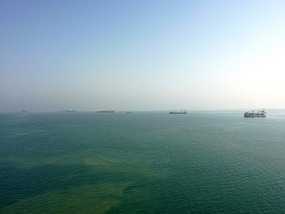
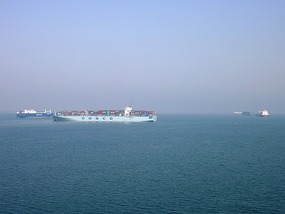
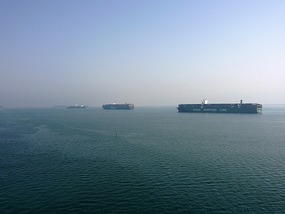

















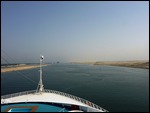
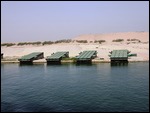

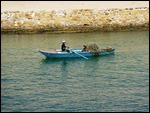
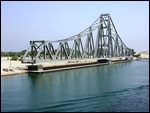
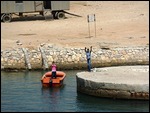
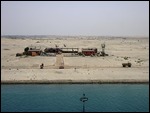
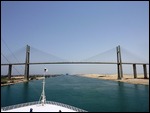
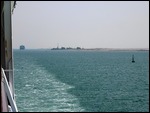
2025-05-22